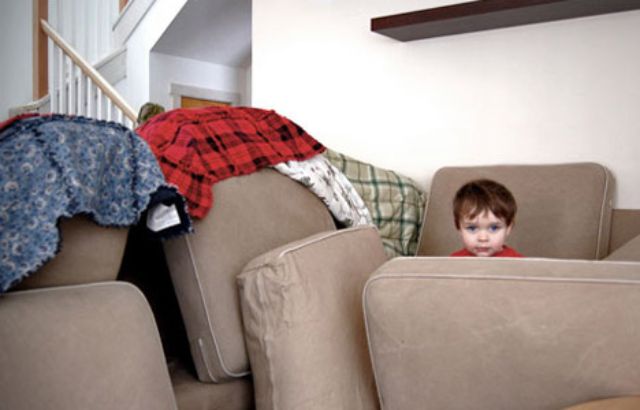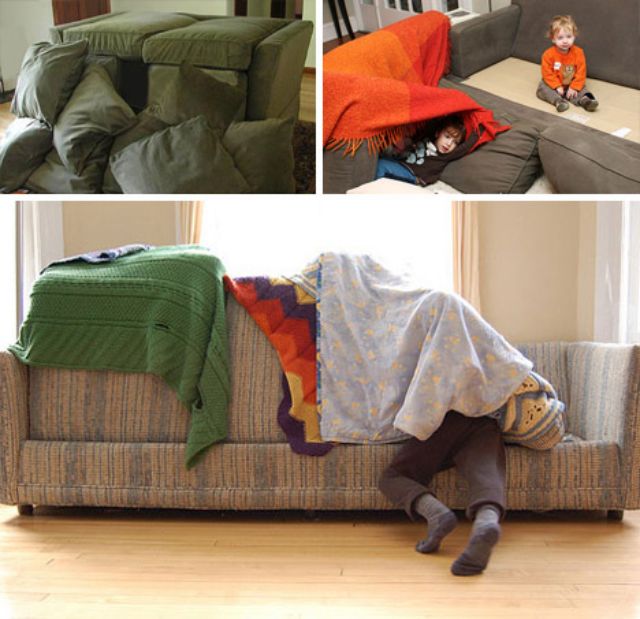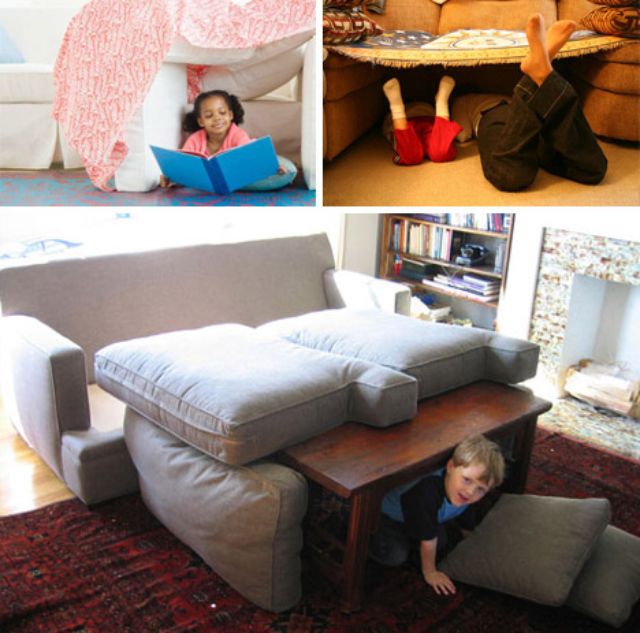Funny Critiques of Pillow Fort Architecture

The pillow fort: a universal building type found in almost every child-occupied home in some form or another, yet rarely considered in treatises on architectural theory, history or design. Seem silly? Perhaps it is, but funny or no: one person has taken the time to consider what aspects of sofa-pillow architecture are childish versus which are timeless.

Build LLC has taken the liberty of critiquing a variety of real-life pillow forts in terms of their treatment of everything from color and material to indoor and outdoor space divisions. The analysis also touches on historic design paradigms, styles and movements as well as famous architects to which some of these creations are directly compared – from the Mayan pyramids to Modernists like Wright, Meier and van der Rohe.

A few examples are relatively simple, box-like structures typical of classic Modern homes. In some cases, though, a kind of playful Postmodern abstraction is found – non-linear geometries that follow artistic inclinations but also serve to delineate spaces in functional ways (at least for the kids using them).
Of the blanket fort in the lower image above, they write: “A clear derivative of the Miesian box, this handsome project is “informalized” with the use of colorful, freeform roof panels. Taking further direction from the Archigram movement, the project explores architecture as body wrap and propels couch cushion architecture to new and exciting territory. Grade: A”

“We greatly admire the use of coffee table as lateral moment-frame in this application. The solution is both formal and fun, offering the users a sequence of experiences beginning with the entry to vaulted ceiling to raised deck. Grade A-“
Certain cushion-based structures employ not just architectonic (compression-reliant construction, like concrete) pillow stacks but also sheets in tension (like wires or cables holding up roofs) supported by weights or rigid moment-frame structures already in the built landscape around them (e.g. a stable, fixed-corner wood table). Being built by children does not, in short, preclude them from reflecting construction strategies that span spectrums of building style, history, materials and structural approaches.
It’s a funny read, and definitely worth checking them all out in full.




